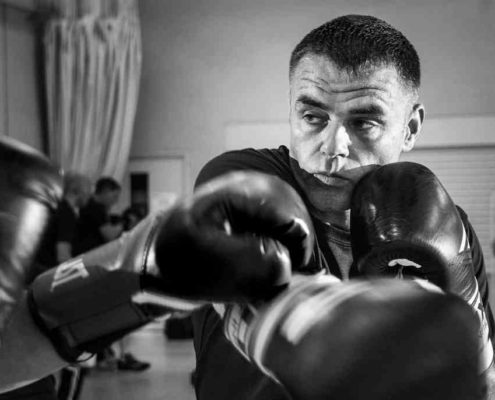Is Krav Maga Useful in a Real Fight? A Comprehensive Breakdown of Its Effectiveness
Krav Maga has earned a global reputation as a highly effective self-defense system. Developed for the Israeli Defense Forces (IDF) in the 1930s, Krav Maga focuses on preparing practitioners for real-world scenarios where survival is the primary goal. Despite misconceptions that it solely relies on “dirty” techniques like eye pokes and groin strikes, Krav Maga incorporates a comprehensive set of techniques, including boxing and grappling, and emphasizes both offensive and defensive strategies.
In this article, we’ll explore the true nature of Krav Maga, debunk some myths, and thoroughly analyze whether it is useful in a real fight. With a focus on its foundational elements, such as sparring, grappling, and situational training, we will see why Krav Maga is one of the most practical systems for real-life confrontations.
What is Krav Maga?
Krav Maga is not just a martial art; it is a self-defense system designed to prepare individuals for a variety of dangerous situations. The system’s roots come from real combat experience, and it has evolved over the decades to become a widely practiced form of self-defense for military, law enforcement, and civilians alike.
While many associate Krav Maga with tactics like eye pokes and groin strikes, this represents only a small part of its overall strategy. Krav Maga also includes techniques from boxing, grappling, and other disciplines — see our full guide on combat grappling for self-defense — but modifies them for maximum effectiveness in self-defense scenarios.
Key Principles of Krav Maga:
- Simplicity and Efficiency: Techniques are designed to be simple and effective, allowing individuals to react under stress without overthinking.
- Speed and Aggression: Krav Maga emphasizes aggressive counters to neutralize a threat as quickly as possible.
- Real-World Application: Training is based on real-life situations, making it highly practical for street fights, home invasions, and other sudden attacks.
- Defensive and Offensive Integration: Practitioners are taught to block, counter, and strike simultaneously, increasing their efficiency in a real fight.
Dispelling the Myth: Krav Maga is More Than Eye Pokes and Groin Strikes
A common misconception is that Krav Maga relies solely on “cheap” techniques like eye pokes, groin strikes, or other attacks to sensitive areas. While these techniques do exist and are certainly part of the Krav Maga toolbox, they are only a fraction of what the system offers.
In reality, Krav Maga integrates techniques from several combat disciplines, particularly boxing and grappling. These components provide a foundation that makes Krav Maga well-rounded, effective, and adaptable to a variety of situations.
Boxing in Krav Maga
Boxing forms a significant part of Krav Maga’s striking techniques. Practitioners are trained in:
- Punches: Including jabs, hooks, uppercuts, and straight punches, which are vital for creating openings and damaging opponents.
- Elbow Strikes: Powerful and close-range elbow strikes are emphasized, especially when an opponent closes the distance.
- Footwork and Head Movement: Borrowing from boxing, Krav Maga trains individuals to evade strikes using lateral movement, slips, and head movement to stay mobile in a fight.
These techniques are not just thrown randomly. The system teaches how to target vital areas such as the chin, neck, and body, aiming to quickly incapacitate the attacker. Krav Maga does not restrict itself to sport-like conditions, so strikes may be aimed at vulnerable areas (like the groin or throat), but the foundation is rooted in proper boxing techniques.
Grappling in Krav Maga
Another essential component of Krav Maga is its use of grappling techniques. In many real fights, opponents may try to grab or wrestle their target to the ground. Krav Maga prepares its practitioners for these close-quarters encounters with an extensive grappling toolkit.
Key Grappling Techniques in Krav Maga:
- Wrist Grabs and Releases
- Choke Defense
- Takedown Defense
- Throws and Sweeps
These grappling techniques are designed to be functional and straightforward, ensuring that even under stress, practitioners can execute them effectively.
Sparring in Krav Maga: Preparing for Realistic Combat
Sparring is a crucial element of Krav Maga training. Unlike martial arts that focus purely on theoretical techniques or drills, Krav Maga places a heavy emphasis on sparring to simulate real combat situations. This allows practitioners to apply techniques under pressure, refine their timing, and develop the situational awareness necessary for real-world self-defense.
Situational Training and Tactics in Krav Maga
Another vital aspect of Krav Maga is situational training. Unlike sport-based martial arts, Krav Maga prepares practitioners for a variety of scenarios they could encounter in real life.
Examples include:
- Close-Quarters Defense
- Defending Against Weapons
- Dealing with Multiple Attackers
This emphasis on practical scenarios is where Krav Maga excels. The training focuses not only on technique but also on mental preparedness.
Statistical Evidence of Real Fights and Self-Defense Scenarios
To understand why Krav Maga is highly practical for real fights, let’s look at some statistics:
- Multiple Attackers: Krav Maga’s emphasis on dealing with multiple attackers is critical in preparing individuals for these situations.
- Weapon Involvement: Krav Maga’s weapon defense training is designed to give individuals the tools to survive such encounters.
- Duration of Fights: Krav Maga’s emphasis on quick, aggressive responses is key to ending a confrontation before it escalates.
Conclusion: Is Krav Maga Useful in a Real Fight?
Absolutely. Krav Maga is highly effective in real fights because it is designed specifically for real-world scenarios. It integrates boxing for powerful, well-timed strikes, grappling to handle close-quarters encounters, and situational awareness training to prepare individuals for various dangerous situations.
If you are looking for a self-defense system that prepares you for the chaotic and unpredictable nature of real combat, Krav Maga is undoubtedly one of the best options available.
